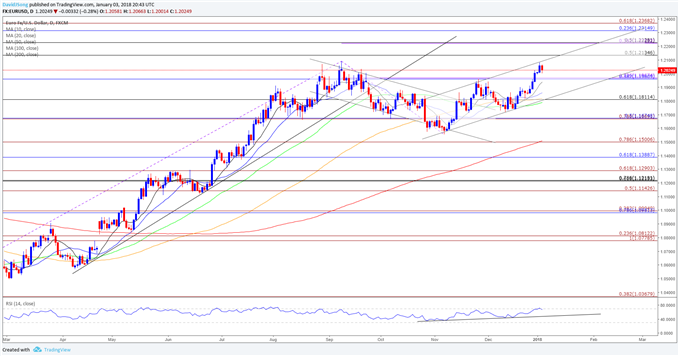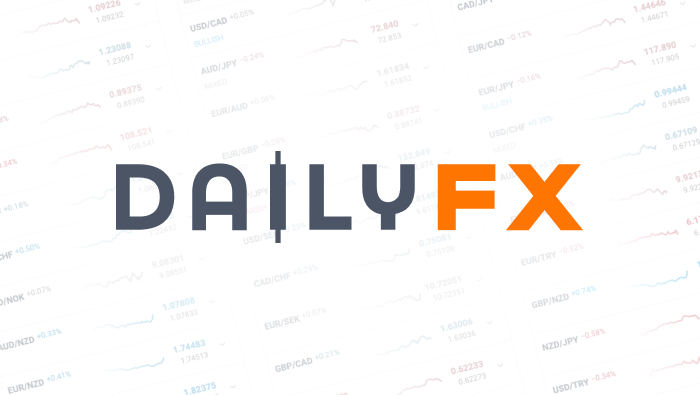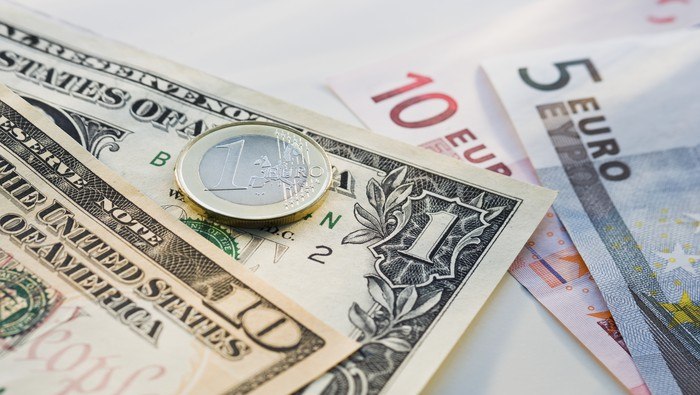The broader shift in EUR/USD behavior may continue to unfold in 2018 as the exchange rate breaks out of the range carried over from 2015.
The bullish sentiment surrounding the single-currency may continue to build over the coming months as the European Central Bank (ECB) starts to wind down its quantitative easing (QE) program, and President Mario Draghi and Co. may prepare European households and businesses for a less accommodative stance as ‘the economic expansion in the euro area continues to be solid and broad-based.’
Recent comments from Governing Council officials suggest the central bank will continue to change its tune over the comings months especially as board member Ardo Hansson favors a gradual change in the forward-guidance for monetary policy, while Jens Weidmann notes that the ECB is on ‘track toward our definition of price stability.’ Moreover, Yves Merschhas noted that the executive board must be ‘very careful not to act too timidly and too late and to fall behind the curve,’ while Benoit Coeurewarned that ‘markets have to understand that QE will not last forever.’
In contrast, the Federal Open Market Committee (FOMC) may find it increasingly difficult to justify three rate-hikes in 2018 as ‘some participants observed that there was a possibility that inflation might stay below the objective for longer than they currently expected.’ Signs of limited price growth may prompt the FOMC under Jerome Powell to adopt a more cautious tone, with the central bank at risk of concluding its hiking-cycle ahead of schedule amid ‘concern that persistently weak inflation may have led to a decline in longer-term inflation expectations.’ Interested in having a broader discussion on current market themes? Sign up and join DailyFX Currency Analyst David Song LIVE for an opportunity to discuss potential trade setups!
EUR/USD Weekly Chart

Longer-term outlook for EUR/USD remains constructive as a bull-flag formation unfolds in early 2018, while the Relative Strength Index (RSI) preserves the bullish trend carried over from November and flirts with overbought territory for the first time since the summer months. However, the near-term outlook remains capped by the 1.2130 (50% retracement) hurdle, with the failed attempt to test the September-high (1.2092) raising the risk for a pullback. In turn, the former-resistance zone around 1.1960 (38.2% retracement) stands on the radar, with the next downside region of interest coming in around 1.1810 (61.8% retracement).New to the currency market? Want a better understanding of the different approaches for trading? Start by downloading and reviewing the FREE DailyFX Beginners guide !
--- Written by David Song, Currency Analyst
To contact David, e-mail dsong@dailyfx.com. Follow me on Twitter at @DavidJSong.
To be added to David's e-mail distribution list, please follow this link.





